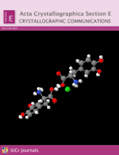
Acta Crystallographica Section E-Crystallographic Communications
Scope & Guideline
Catalyzing innovation in crystallography with every published finding.
Introduction
Aims and Scopes
- Crystal Structure Determination:
The journal publishes studies that report the determination of crystal structures using various techniques such as X-ray diffraction, neutron diffraction, and electron diffraction. - Hirshfeld Surface Analysis:
Many articles include Hirshfeld surface analysis, which provides insights into intermolecular interactions and molecular packing in crystals. - Coordination Compounds and Complexes:
Research on coordination compounds, metal-organic frameworks, and their structural properties is a significant focus, showcasing the diversity of coordination environments. - Polymorphism and Solvates:
The journal frequently addresses polymorphism and solvate forms of compounds, which are crucial for understanding material properties and behaviors. - Theoretical and Computational Studies:
Studies that incorporate computational methods, such as density functional theory (DFT) calculations, to complement experimental crystallographic data are also featured.
Trending and Emerging
- Intermolecular Interactions and Energy Frameworks:
There is an increasing emphasis on the analysis of intermolecular interactions and energy frameworks, which provides valuable insights into the stability and properties of crystalline materials. - Sustainable and Green Chemistry Approaches:
Research that incorporates principles of sustainability and green chemistry in the synthesis and characterization of crystalline materials is on the rise, reflecting broader scientific goals. - Metal-Organic Frameworks (MOFs) and Coordination Polymers:
The publication of studies related to metal-organic frameworks and coordination polymers has gained momentum, emphasizing their structural diversity and potential applications in various fields. - Computational Crystallography:
The integration of computational methods with experimental crystallography is becoming more prevalent, with studies utilizing DFT and molecular docking to provide deeper insights into crystal structures. - Emerging Materials and Complexes:
Research focusing on novel materials, including those derived from natural products or new synthetic routes, is increasingly prominent, showcasing the journal's commitment to advancing the field.
Declining or Waning
- Biological Macromolecules:
There has been a noticeable decrease in the publication of studies focusing on the crystallography of biological macromolecules, such as proteins and nucleic acids, compared to previous years. - Organic Synthesis Reports:
Studies that primarily report on organic synthesis without providing significant crystallographic data or insights seem to be less frequent, as the journal increasingly emphasizes structural analysis. - Experimental Techniques Beyond Crystallography:
Papers focusing solely on experimental techniques that do not directly contribute to crystallography, such as general synthetic methods, are appearing less frequently.
Similar Journals

Crystals
Unlocking the Secrets of Crystalline MaterialsCrystals is a premier open-access journal, published by MDPI since 2011, that focuses on the multidisciplinary fields of chemical engineering, condensed matter physics, inorganic chemistry, and materials science. With its E-ISSN 2073-4352, the journal is headquartered in Switzerland, and actively contributes to the global scientific community by facilitating the dissemination of high-quality research. Ranking in the Q2 quartile across multiple categories, including Chemical Engineering (miscellaneous) and Materials Science (miscellaneous) for 2023, Crystals provides a platform for innovative studies that span from fundamental research to practical applications. The journal's commitment to open access ensures that groundbreaking findings are readily available to researchers, professionals, and students alike, fostering an environment of collaboration and knowledge sharing that is essential in advancing the scientific understanding of crystalline materials.
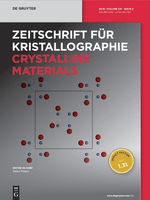
Zeitschrift fur Kristallographie-Crystalline Materials
Exploring the Depths of Crystalline InnovationZeitschrift für Kristallographie-Crystalline Materials is a prestigious academic journal published by Walter de Gruyter GmbH, focusing on the intricate field of crystallography and its applications within condensed matter physics, inorganic chemistry, and materials science. Established in Germany, this journal spans a rich history from its inception in 1930 to its convergence years from 2012 to 2024, presenting cutting-edge research and developments in crystalline materials. With an impact factor reflective of its critical role within its field—ranking Q3 in the prestigious quartiles for 2023 across multiple categories—this journal serves as an essential platform for researchers, professionals, and students seeking to expand their knowledge and contribute to the advancement of crystalline materials. While currently not offering open access, the journal remains committed to disseminating high-quality, peer-reviewed articles that inspire innovation and collaboration within the scientific community.
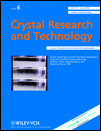
CRYSTAL RESEARCH AND TECHNOLOGY
Illuminating the Path of Crystal TechnologyCRYSTAL RESEARCH AND TECHNOLOGY, published by WILEY-V C H VERLAG GMBH, is a distinguished journal in the fields of Chemistry, Condensed Matter Physics, and Materials Science, with over five decades of continuous publication from 1966 to 2024. With its ISSN 0232-1300 and E-ISSN 1521-4079, the journal serves as a crucial platform for disseminating significant research findings, theoretical advances, and technological innovations related to crystal growth, structure, and properties. Holding a Category Quartile ranking of Q3 in the 2023 assessments across its disciplines, CRYSTAL RESEARCH AND TECHNOLOGY is recognized for its contribution to the scientific community, making it an essential resource for researchers, professionals, and students alike. While this journal is not open access, its robust publishing framework ensures that high-quality peer-reviewed articles remain accessible to a global audience. The importance of this journal lies in its commitment to advancing knowledge and fostering collaborations in crystallography and related fields.

PHYSICS AND CHEMISTRY OF MINERALS
Exploring the Foundations of Geochemical InnovationPHYSICS AND CHEMISTRY OF MINERALS, published by SPRINGER, is a premier journal dedicated to advancing the understanding of the physical and chemical properties of minerals, their interactions, and their significance in various geological processes. With an ISSN of 0342-1791 and an E-ISSN of 1432-2021, this journal serves as a vital resource for researchers and professionals in geochemistry and petrology, as well as materials science. Reflecting the journal's commitment to quality scholarship, it has achieved Q3 rankings in both Geochemistry and Petrology, and Materials Science (miscellaneous) categories. Established in 1977 and continuing through 2024, the journal has consistently provided a platform for high-impact research, fostering collaboration and innovation in the field. Located in Germany and reaching a global audience, PHYSICS AND CHEMISTRY OF MINERALS is instrumental for students, academics, and industry experts looking to stay at the forefront of mineral research and applications.
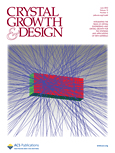
CRYSTAL GROWTH & DESIGN
Advancing Knowledge in Material InnovationCRYSTAL GROWTH & DESIGN, published by the American Chemical Society, is a premier journal dedicated to the interdisciplinary study of materials science, condensed matter physics, and miscellaneous chemistry. With an ISSN of 1528-7483 and E-ISSN of 1528-7505, this journal provides a vital platform for the dissemination of innovative research findings from 2001 through 2024, reflecting the dynamic advancements in crystal growth and design methodologies. It is recognized for its impact in the field, earning a distinguished placement in the Q2 quartile across categories of Chemistry, Condensed Matter Physics, and Materials Science for 2023. Researchers engaging with CRYSTAL GROWTH & DESIGN will find a wealth of peer-reviewed articles encompassing cutting-edge experimental techniques, theoretical frameworks, and application-oriented studies. Although not an open-access journal, it remains a critical resource for academics, professionals, and students aiming to enhance their understanding of crystal growth processes and material functionality, with Scopus rankings reflecting its reputable authority within the scientific community.
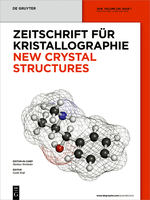
ZEITSCHRIFT FUR KRISTALLOGRAPHIE-NEW CRYSTAL STRUCTURES
Connecting Researchers to Crystal DiscoveriesZEITSCHRIFT FÜR KRISTALLOGRAPHIE-NEW CRYSTAL STRUCTURES, published by Walter de Gruyter GmbH, is a pivotal open-access journal dedicated to the study of crystal structures and their applications across various scientific disciplines, including condensed matter physics, inorganic chemistry, and materials science. Since its inception in 1954, the journal has been a vital resource for researchers, scholars, and professionals aiming to advance their understanding of crystal forms and their interactions. Operating with an open-access model since 1997, it ensures that the latest research is readily available to a global audience, promoting collaboration and innovation in the field. Although it holds a Q4 categorization in its respective quartiles for 2023, its commitment to disseminating significant findings in crystal structures is unwavering. The journal's location in Germany signifies its historical role in advancing crystallography research, making it an important platform for presenting new discoveries and insights. Whether you are seeking to publish your findings or explore cutting-edge research, ZEITSCHRIFT FÜR KRISTALLOGRAPHIE is an essential academic resource for the crystallography community.

CRYSTENGCOMM
Driving excellence in crystallization and materials science research.CRYSTENGCOMM is a distinguished journal published by the Royal Society of Chemistry, dedicated to advancing the field of crystallization and crystal engineering. With its impact factor consistently among the top tier in its category, CRYSTENGCOMM serves as an essential platform for researchers, professionals, and students in Chemistry, Condensed Matter Physics, and Materials Science. The journal has successfully maintained its relevance and influence since its inception, showcasing pioneering research from 1999 to 2024, with a commendable Q2 ranking in the latest evaluations. This accessibility to crucial developments in crystallization facilitates knowledge transfer across disciplines and enhances collaboration within the scientific community. Although it operates under a subscription model, the journal remains committed to disseminating cutting-edge research and fostering innovation in the field. For more information or to submit your research, please visit the Royal Society of Chemistry's website.

Journal of Surface Investigation
Pioneering Research in Nanotechnology and Material ScienceThe Journal of Surface Investigation, published by PLEIADES PUBLISHING INC, is a key platform for scholars and practitioners in the fields of Nanoscience and Nanotechnology as well as Surfaces, Coatings, and Films. With an ISSN of 1027-4510 and an E-ISSN of 1819-7094, this journal serves as a repository for innovative research and comprehensive reviews, contributing significantly to the understanding and development of surface phenomena. Despite its recent Q4 ranking, it remains a crucial resource for emerging research, fostering advancements in material science. Targeting a diverse audience including researchers, professionals, and students, the journal encourages submissions that explore novel methodologies, applications, and theoretical frameworks in surface characterization and modification. It operates without an open access policy, thereby maintaining a focus on rigorous peer review and high-quality scholarly contributions. With research converging over several years, particularly from 1997-2001 and 2007-2024, the journal sustains a vital role in disseminating knowledge and stimulating innovative dialogue within the scientific community.

RUSSIAN JOURNAL OF INORGANIC CHEMISTRY
Fostering Insights for a Sustainable FutureThe Russian Journal of Inorganic Chemistry is a distinguished publication that delves into the fundamental and applied aspects of inorganic chemistry. Published by MAIK Nauka/Interperiodica/Springer, this journal has established itself as a vital resource for researchers, professionals, and students alike, contributing significantly to the fields of Inorganic Chemistry, Materials Science, and Physical and Theoretical Chemistry. With an ISSN of 0036-0236 and an E-ISSN of 1531-8613, the journal is indexed for easy access and citation. Though the journal currently operates under a subscription model, its commitment to disseminating high-quality research and fostering scientific discourse remains steadfast. The journal has been maintaining a consistent record since its inception, and its positioning in the Q3 quartile across various chemistry categories in 2023 underscores its relevance in the academic community. As it continues through its converged years from 1996 to 2024, the Russian Journal of Inorganic Chemistry plays a pivotal role in enhancing the understanding and advancement of inorganic chemistry, making it an indispensable tool for anyone engaged in this dynamic field.

CRYSTALLOGRAPHY REPORTS
Advancing Knowledge in Crystallographic ResearchCRYSTALLOGRAPHY REPORTS (ISSN: 1063-7745, E-ISSN: 1562-689X), published by PLEIADES PUBLISHING INC, is a pivotal journal in the fields of chemistry, condensed matter physics, and materials science. Established in 1996 and continuing through to 2024, it serves as a vital resource for researchers and professionals seeking to disseminate and engage with contemporary advancements in crystallography. While currently not classified as open access, the journal's rigorous peer-review process ensures the publication of high-quality research, making it a respected entity within the academic community. With a categorization in the Q4 quartile for its respective fields and notable Scopus rankings, CRYSTALLOGRAPHY REPORTS is committed to fostering an understanding of crystallographic techniques and their application across scientific disciplines. This journal is essential for those looking to stay abreast of the latest findings and methodologies in crystallography, providing a platform for impactful discussions and collaborations.